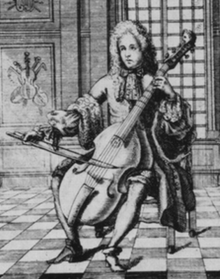Carolus Hacquart

Carolus Hacquart (alternative name: Carel Hacquart) was a composer, born ca. 1640 in Bruges, in present-day Belgium.
Life
Hacquart received his education, comprising Latin and composition as well as viola da gamba, lute and organ, most probably in his native town. Attracted by the growth of musical life of the rich citizens of the United Provinces, he moved with his brother Philip to Amsterdam in the early 1670s where both gained a living as free-lance musicians. He moved in 1679 to The Hague, where he taught and organized concerts with the support of the elderly Constantijn Huygens, who was the chief councillor of William III, the future king of England. Thanks to Huygens' recommendation of Hacquart to the stadtholder Maurice of Nassau, Prince of Orange, Hacquart could organise weekly concerts in the famous Mauritshuis. Hacquart was also an organist at the Old-Catholic church of The Hague.
To earn a living, Hacquart gave music classes to many wealthy patricians such as lawyers and other notables who made music in their spare time. One of his students was Willem Hoogendorp, the future mayor of Rotterdam to whom he dedicated his sonatas Harmonia Parnassia. In 1686 Hacquart composed 12 suites under the title Chelys which he dedicated to two of his students, the lawyers Pittenius and Kuysten.
Little is known about his life after 1686. Based on the possible identification with a person with a similar name, it is believed that he had then moved to England. Hacquart died, possibly in 1701, according to the New Grove Dictionary of Music and Musicians.
Work
Hacquart is the composer of the first opera in the Dutch language with the title De triomfeerende Min (Triumphant Love). The opera was based on a text by Dirk Buysero (nl) which he wrote on the occasion of the Treaty of Nijmegen of 1678. Unfortunately most of the music of this opera has to be considered lost.
Three other publications of his music have survived, his first published work: Cantiones Sacrae (religious pieces for vocal soloists, choir and instrumentalists which could be sung by both Catholics and Protestants, 1674), his second published work: Harmonia Parnassia (a collection of 10 sonatas for two or three violins and basso continuo, 1686), and his third published work: Chelys (1686). The work Chelys consists of 12 suites that can be performed by one viol, two viols or one viol with a basso continuo accompaniment. Hacquart's works are kept in the library of Durham Cathedral, England.
References
- Het Honderd Componisten Boek, Haarlem, 1997
- Carel Hacquart (1640–1701?) Een biografische bijdrage, Pieter Andriessen, Het werk, Brussel 1974
- The New Grove Dictionary of Music and Musicians, London, 2001
External links
Selected discography
- Carolus Hacquart, Le maistre de musique, Ricercar Consort, CD Flora 0705 (2007)
- Carolus Hacquart, Cantiones & Sonate, Ensemble Clématis, with the soprano Céline Scheen, CD Musica Ficta (2006)
- Carolus Hacquart, Chelys – Guido Balestracci and others, CD Symphonía (2004)
- Carolus Hacquart, The Triumph of Love / De Triomfeerende Min, Camerata Trajectina, CD Globe 6069 (2012)
|